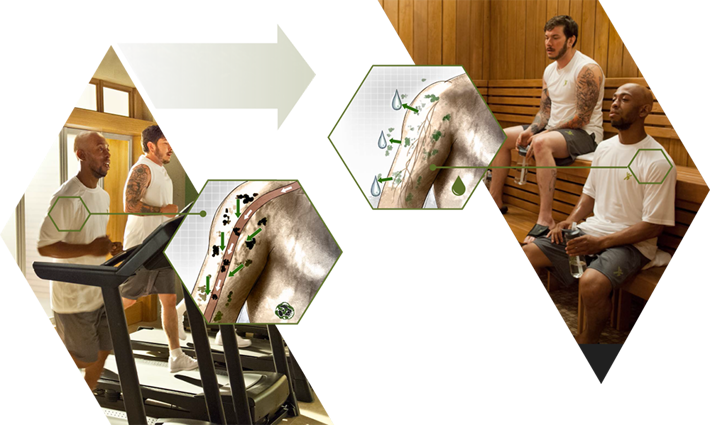Heroin Detox
Getting a heroin addict through a detox is their first step on the way to a new, drug-free life. But amazingly, many forms of heroin addiction treatment sidestep this action completely. By giving a heroin addict a substitute, similar substance—or even in some areas, a pharmaceutical form of heroin—a heroin detox is avoided.
Substitution is Not Detox
In the US and across Europe, drug programs aim only to reduce the harm of heroin addiction by providing the addict with a chemically-similar drug that prevents withdrawal symptoms from kicking in. The problem is that the person remains chained to an addictive substance. Some formulations are compounded in a way intended to reduce or eliminate the euphoric effect of heroin. But since all of them have become themselves drugs of abuse, this fact tends to support the theory that they do not provide a high.
Proponents of this substitution treatment argue that since these heroin addicts (now turned into synthetic opiate addicts) are no longer living illegal lifestyles and are not spreading disease by sharing needles and other risky behavior, that this harm reduction is a valid therapy. There is some truth there because the harm of drug use is reduced.
But these questions remain:
- If a heroin addict can find a tolerable drug detox, and
- If he can be gotten off the heroin, and
- If she can learn to live a drug-free life and can be returned to society as a productive member again, then
- Why would anyone condemn him or her to years or an indefinitely long future of opiate consumption?
The Narconon Drug Rehab Helps Heroin Achieve Stable Sobriety
For five decades, the Narconon drug rehab program has enabled heroin addicts to detox and complete a drug-free rehabilitation. Instead of long-term substitute drugs like methadone, buprenorphine, Suboxone or other formulations, a heroin addict is eased through withdrawal using a combination of nutritional supplementation, gentle reorientation exercises, and physical techniques that help alleviate pain and discomfort. As surprising as it might sound, some of the severity of heroin detox yields to these simple and non-invasive techniques used at Narconon drug rehabs.

Where a step down is medically required, which may be the case if the individual has also been using synthetic opiates or other drugs in addition to heroin, we also work with medical detox services so they can be weaned down before starting the Narconon program. This puts them safely on the road to living a truly drug-free life.
Remedying Nutritional Deficiencies
Because most addicts starting a heroin detox are in poor physical condition, receiving immediate and ample nutritional supplementation alleviates some symptoms that are really based on nutritional deficiencies. Drugs and stressful lifestyles are known to deplete nutritional stores. Nutritional deficiencies can also cause the depression suffered by so many trying to recover from addiction.
While going through heroin detox at a Narconon drug rehab, the recovering addict is helped through the physical symptoms with simple techniques, each one providing relaxation that makes the person more comfortable. These techniques, called assists, help calm the nervous system and so help reduce cramps and spasms. Calcium and magnesium drinks help the muscles relax as well. The result is that the recovering heroin addict may find this withdrawal to be unlike anything he or she has experienced before.
Once the heroin detox is done and the person is ready to leave the withdrawal phase of recovery, the recovering addict faces the remainder of the program with a tolerable experience behind him. For some, this starts off the entire drug rehab process on a very positive note.
Eliminating Stored Drug Residues Helps Leave Drug Cravings Behind
The Narconon drug-free withdrawal phase is quickly followed by the Narconon New Life Detoxification. This is a thorough detox that uses sweating in a dry-heat sauna, moderate exercise and a strict pattern of nutritional supplements to enable the body to flush out old drug toxins.

After the body breaks down drugs like heroin or cocaine and gets rids of the majority of the components, residues called metabolites are left behind, lodged in fatty tissues. These residues have been proven to be involved in the triggering of cravings, even years after a person stops taking drugs. The proof is that once a student on the Narconon program flushes out these residues, she not only can think more clearly, she also normally notices a reduction in drug cravings. Some people even say they are gone. There is no greater gift to a person who intends to leave an addicted lifestyle behind than the reduction or elimination of drug cravings. Without this, every day may be a battle to overcome the cravings and stay sober.
Life Skills are Needed to Stabilize the Recovering Addict
Once the cravings are reduced, the recovering person then begins the Objectives, a series of exercises that gradually brings him back into communication with the real world, current environment and out of the past.
Next, he must regain the self-respect and integrity that is often lost during addiction and learn how to make drug-free decisions, even in moments of stress. These aspects of recovery are covered in the remainder of the Narconon drug rehab program. Step by step, the Life Skills components of the Narconon program walk each participant through the rebuilding of a new drug-free life.